Hostingof website is the cornerstone of making any website accessible on the internet. Think of it as renting space on a computer (called a server) that is always connected to the internet. This server stores your website’s files—HTML documents, images, videos, and all other content—and delivers them to anyone who enters your domain name into a web browser.
The process of web hosting begins with choosing a provider that offers various types of plans tailored to different needs. It is the most economical option, where multiple websites share resources on a single server. It’s ideal for small to medium-sized websites with moderate traffic. Virtual Private Server (VPS) hosting provides a more scalable and customizable solution by partitioning a physical server into multiple virtual servers, offering more control and resources than shared hosting.
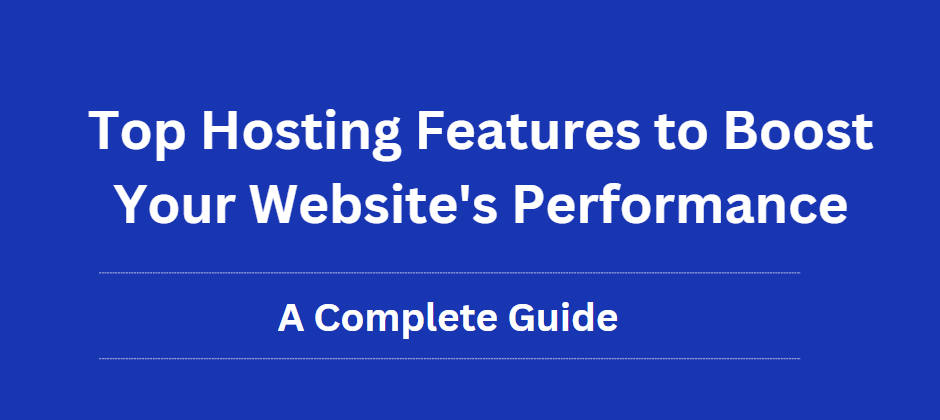
Table of Contents
What is Web Hosting?
Web hosting is an essential service that allows individuals and organizations to publish their websites on the Internet. Imagine your website as a house you’ve built on a plot of land—the web host provides that land (server space) where your house (website files) can reside and be accessible to visitors.
This involves storing your website’s files on a server, which is a powerful computer connected to the internet. When someone types your domain name (e.g., ultimatefreehost. in) into their browser, the browser connects to the server where your website is hosted, retrieves the files, and displays them to the visitor. This seamless process happens within seconds, thanks to the robust infrastructure and high-speed connections of web providers.
Web hosting services vary widely, catering to different needs and technical requirements. This is cost-effective and popular for smaller websites, where multiple sites share resources on the same server. For more control and scalability, virtual private servers (VPS) provide dedicated resources within a shared environment.
It offers an entire server exclusively for your website, ensuring maximum performance and customization options. Cloud distributes resources across multiple servers, enhancing reliability and flexibility.
How Does Web Hosting Work?
- Server Space: Websites are hosted on servers, which are powerful computers that store and serve websites. These servers are usually housed in data centers, equipped with high-speed internet connections and backup power supplies to ensure continuous operation.
- Domain Name: When you purchase web hosting, you typically get a domain name or can use an existing one. The domain name serves as the address that users type into their browsers to find your site.
- Storage and Bandwidth: These providers allocate storage space for your website’s files (text, images, videos, etc.) and provide bandwidth, which determines how much data can be transferred to and from your site. Bandwidth is important because it affects how quickly your website loads and how many visitors it can handle simultaneously.
- Types: There are various types of web, including shared hosting (where multiple websites share resources on a single server), VPS (Virtual Private Server), dedicated hosting (where you have an entire server dedicated to your website), and cloud hosting (which uses multiple servers to balance the load and maximize uptime).
- Additional Services: Web hosting providers often offer additional services such as email hosting, SSL certificates (to secure your site), website builders, and backup services.
Popular Web Hosting Providers
1. Ultimatefreehost

Pricing: Ultimatefreehost offers shared hosting starting at approximately $3 per month for the initial term, with higher renewal rates.
Features: They provide a free domain name for the first year, a 1-click WordPress installation, a free SSL certificate, and 24/7 customer support. Bluehost is known for its ease of use, making it a favorite among beginners and WordPress users.
2. HostGator
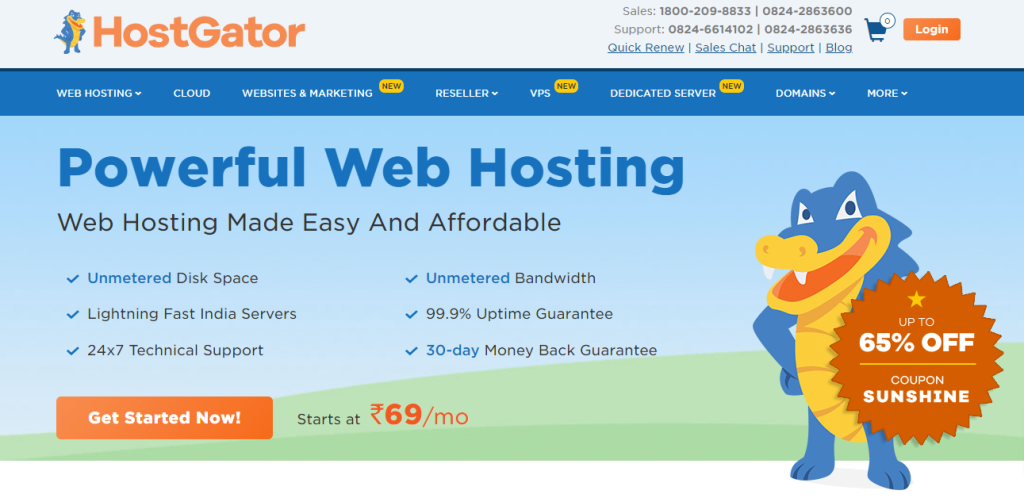
Pricing: HostGator starts at around $2.75 per month for shared hosting, with varying renewal rates.
Features: Key features include unmetered bandwidth, free website transfer, 1-click WordPress install, and 24/7/365 support. HostGator is noted for its scalability, catering to small businesses and large enterprises alike.
3. SiteGround
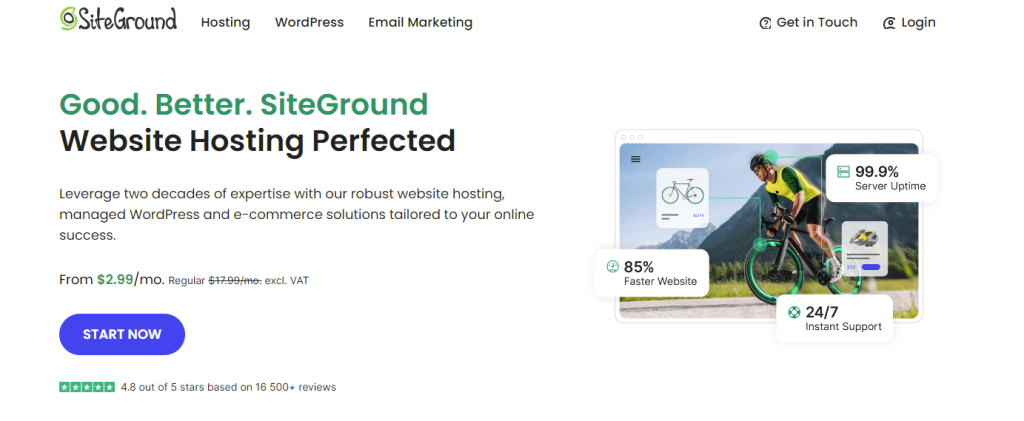
Pricing: SiteGround’s shared hosting plans begin at approximately $3.99 per month, with competitive renewal rates.
Features: They offer managed WordPress hosting, free daily backups, free SSL, SSD storage, and exceptional customer support. SiteGround is praised for its performance optimization and security features.
4. A2 Hosting
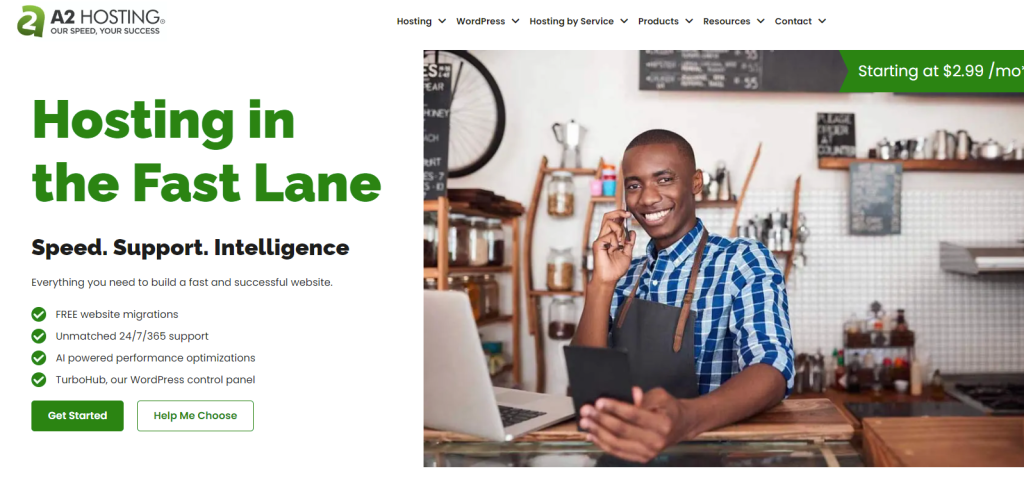
Pricing: A2 Hosting starts at about $2.99 per month for shared hosting, with renewal rates applying thereafter.
Features: Notable features include Turbo Servers for faster performance, free SSL certificate, free website migration, and 24/7 support. A2 Hosting focuses on speed and reliability, appealing to businesses needing high-performance hosting.
5. DreamHost
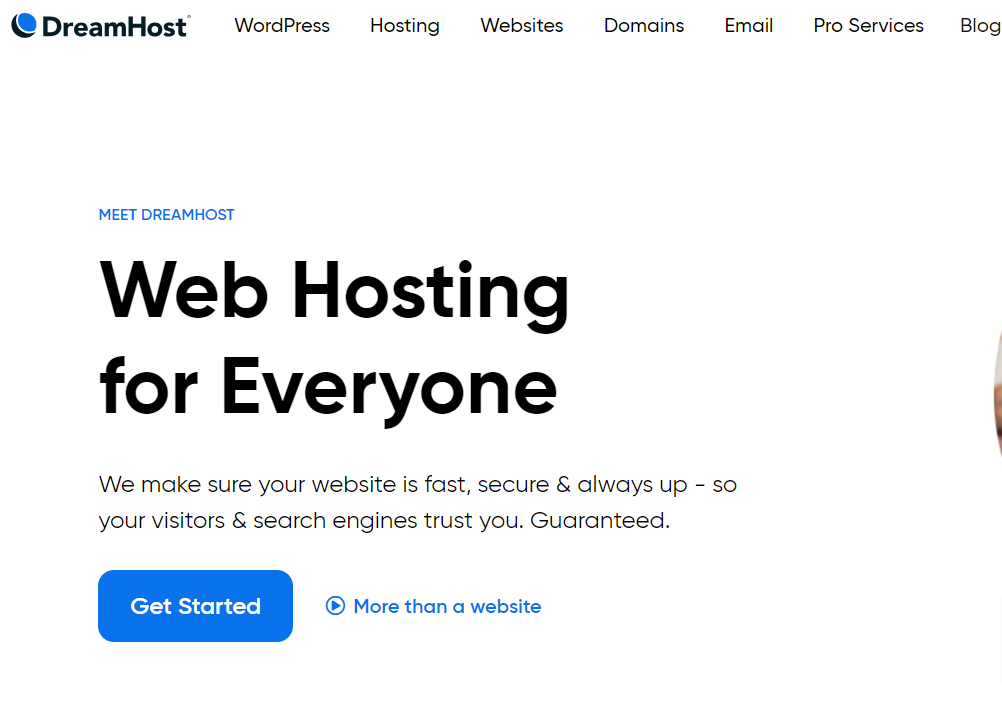
Pricing: DreamHost offers shared hosting starting at approximately $2.59 per month, with a generous 97-day money-back guarantee.
Features: Features include unlimited traffic, free domain registration, pre-installed WordPress, SSD storage, and robust customer support. DreamHost emphasizes transparency and affordability.
6. InMotion Hosting

Pricing: InMotion Hosting starts at around $5.99 per month for shared hosting plans, with varying renewal rates.
Features: They provide a free domain, SSD storage, 1-click installer, free website migration, and US-based 24/7 support. InMotion Hosting is known for its business-friendly features and reliability.
7. GoDaddy

Pricing: GoDaddy’s shared hosting plans start at approximately $6.99 per month, with introductory pricing and renewal rates to consider.
Features: Key features include an intuitive interface, 1-click WordPress setup, free daily backups (on higher plans), and 24/7 support. GoDaddy is renowned for its domain registration services and beginner-friendly hosting solutions.
8. WP Engine
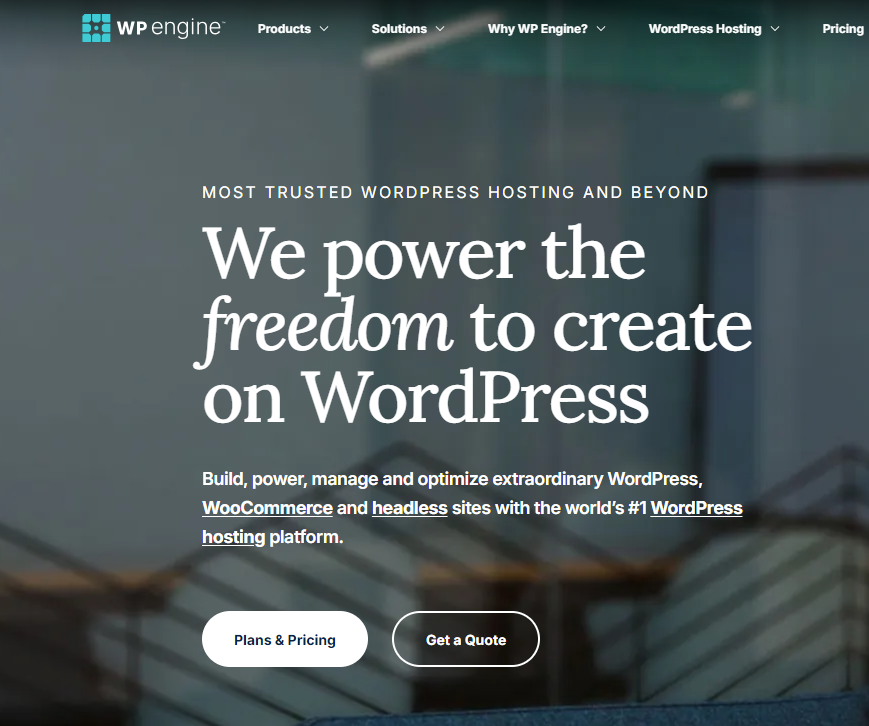
Pricing: WP Engine offers managed WordPress hosting starting at around $25 per month, focusing on performance and security.
Features: They provide daily backups, a staging environment, advanced security features, and exceptional WordPress-specific support. WP Engine caters to businesses and agencies needing robust WordPress hosting solutions.
9. Hostinger
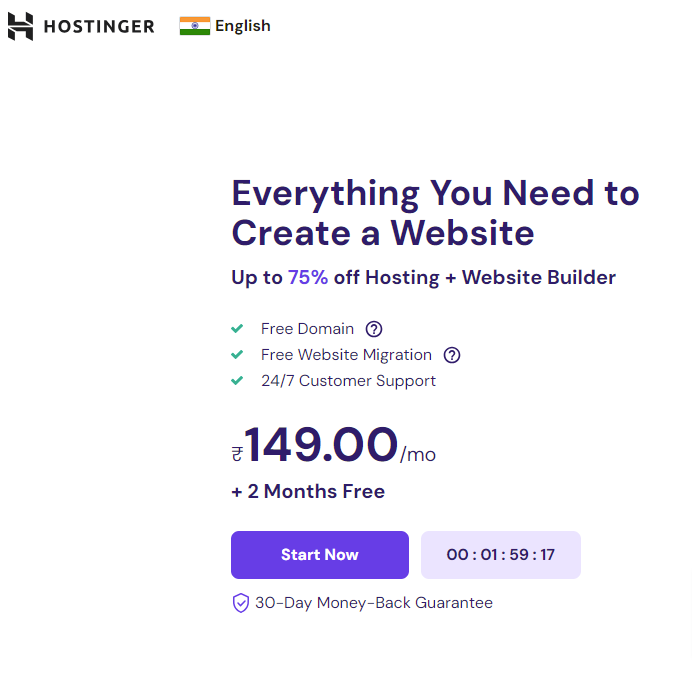
Pricing: Hostinger’s shared plans start at approximately $1.39 per month, making it one of the most affordable options available.
Features: Features include a free SSL certificate, 1-click installer, SSD storage, and 24/7 support. Hostinger is known for its budget-friendly pricing and global presence.
10. iPage
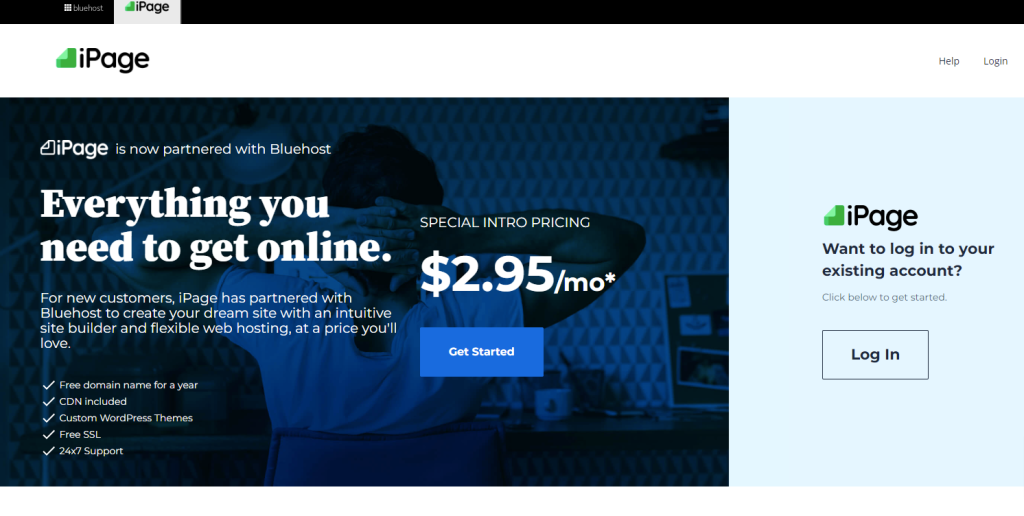
Pricing: iPage offers shared hosting starting at around $1.99 per month, with considerations for renewal rates and additional features.
Features: They provide unlimited disk space, scalable bandwidth, free domain registration, 1-click WordPress installer, and 24/7 support. iPage focuses on simplicity and affordability, making it suitable for personal and small business websites.
Features to Boost Website’s Performance
1. Reliable free hosting
Reliability and high availability are fundamental aspects that directly impact your website’s uptime and user experience. When choosing a hosting provider, look for:
- Uptime Guarantee: Providers often advertise a percentage uptime guarantee (e.g., 99.9%), ensuring your website remains accessible to visitors without significant downtime.
- Server Redundancy: Utilization of redundant server setups and failover mechanisms to minimize downtime in case of hardware failures.
- Data Center Quality: Opt for providers with robust data centers featuring advanced infrastructure like redundant power supply, cooling systems, and physical security measures.
2. Speed Optimization with SSD Storage and CDN
Website loading speed is critical for user experience and search engine rankings. Features that contribute to faster loading times include:
- SSD Storage: Solid-state drives (SSDs) offer significantly faster data access times compared to traditional hard disk drives (HDDs), resulting in quicker website loading speeds.
- Content Delivery Network (CDN): A CDN distributes your website’s static content (like images, CSS, JavaScript) across multiple global servers. This reduces latency and speeds up content delivery to users worldwide.
- Caching Mechanisms: Built-in caching mechanisms (e.g., server-side caching, opcode caching) that store frequently accessed data to reduce server load and improve response times.
3. Security Measures
Ensuring robust security measures is crucial to protect your website and visitors’ data from cyber threats and vulnerabilities. Key security features include:
- SSL/TLS Certificates: Encrypts data transmitted between users and your server, securing sensitive information and boosting user trust.
- Firewall Protection: Implements firewall rules to filter incoming traffic and block malicious requests.
- Malware Scanning and Removal: Regular scans for malware and quick removal to prevent website compromise.
- Backup Solutions: Automated and regular backups of website data to restore in case of data loss or cyber-attacks.
4. Scalability and Resource Allocation
Scalability allows your website to handle growth in traffic and resource demands without performance degradation. Features that facilitate scalability include:
- Resource Allocation: Options to scale CPU, RAM, and storage resources based on traffic fluctuations and website demands.
- Virtual Private Servers (VPS): Provides dedicated resources within a virtualized environment, offering more control and performance compared to shared hosting.
- Cloud Hosting: Scalable infrastructure where resources are dynamically allocated and billed based on usage, ideal for handling unpredictable traffic spikes.
5. User-Friendly Control Panel and Management Tools
Efficient management tools streamline website administration and optimization tasks, enhancing overall performance management. Look for:
- Intuitive Control Panels: User-friendly interfaces (e.g., cPanel, Plesk) that simplify website management tasks such as domain management, file uploads, database management, etc.
- One-Click Installs: Easy installation of popular applications and CMS platforms (e.g., WordPress, Joomla, Drupal) through automated scripts or installer tools.
- Performance Monitoring: Tools and dashboards to monitor website performance metrics like uptime, page load times, server resource usage, etc.
6. Support for E-commerce and Applications
If your website includes e-commerce functionality or specific applications, features should support these requirements:
- E-commerce Compatibility: Integration with secure payment gateways, SSL certificates, and compliance with PCI DSS standards for secure online transactions.
- Application Support: Compatibility with programming languages (e.g., PHP, Python, Ruby) and frameworks necessary for running custom applications.
- Database Management: Support for databases (e.g., MySQL, PostgreSQL) with efficient querying capabilities and data storage management.
7. Customer Support and Service Level Agreements (SLAs)
Reliable customer support ensures prompt resolution of technical issues that may affect your website’s performance. Consider the following support features:
- 24/7 Technical Support: Availability of knowledgeable support staff round the clock to address technical queries and issues.
- Service Level Agreements (SLAs): Guarantees regarding response times and resolution times for critical incidents and support requests.
- Community Support and Resources: Access to online forums, knowledge bases, and documentation for self-help and troubleshooting.
8. Free Subdomain
A subdomain is essentially a part of your main domain name that can be customized to create unique web addresses for specific sections or functionalities of your website.
- Ease of Setup: Setting up a free subdomain is typically straightforward and can be done through the provider’s control panel or dashboard. It involves a few simple configurations and does not require technical expertise or additional DNS management.
- Branding Flexibility: Subdomains provide flexibility in branding and content organization. They allow you to create memorable and relevant URLs that reflect different sections of your website, such as products.example.com or events.example.com. This can enhance user experience and make navigation intuitive for visitors.
- SEO Considerations: While subdomains are considered separate entities from your main domain, they can still benefit from the overall domain authority and SEO efforts of your primary website. This means that well-optimized subdomains can potentially rank in search engine results, increasing your website’s visibility and organic traffic.
That’s all for Hosting!
In the dynamic world of the web, leveraging the right features can make a significant difference in your website’s performance, user experience, and overall success. Throughout this guide, we’ve explored several key features, with a specific focus on the benefits and strategic implementation of free subdomains.
Providers like Ultimatefreehost (UFH) offer free subdomains as part of their service packages, allowing website owners to create distinct web addresses without the cost of purchasing additional domain names. This feature proves invaluable for small businesses, personal websites, and experimental projects looking to establish a presence online without financial constraints.
Frequently Asked Questions on Hosting Features – FAQs
Why would I use a free subdomain instead of buying a new domain?
Using a free subdomain is cost-effective, especially for individuals or small businesses operating on a budget. It allows you to create distinct web addresses without the expense of purchasing additional domain names. This is particularly useful for experimental projects, personal websites, or temporary campaign
What is SSD storage, and why is it important for website performance?
SSD (Solid State Drive) storage is a type of storage technology that uses flash memory to store data, unlike traditional HDDs (Hard Disk Drives) which use spinning disks. SSDs are much faster in data retrieval, resulting in quicker website loading times and improved overall performance.
How important is server uptime for my website?
Server uptime refers to the percentage of time your website is operational and accessible to visitors. High uptime (e.g., 99.9% or higher) ensures that your website remains available most of the time, minimizing downtime and ensuring a positive user experience.
Why does server location matter for hosting?
The physical location of your hosting server can impact the loading speed of your website for visitors. Choosing a server location that is closer to your target audience reduces latency and improves the overall performance of your website.
What are the benefits of HTTP/2 support for website performance?
HTTP/2 is a network protocol that enhances website loading times by allowing multiple files to be transferred simultaneously over a single connection. This leads to faster page load times and improved performance, especially for websites with lots of multimedia content.
How does scalable hosting help my growing website?
Scalable hosting plans allow you to easily upgrade resources (such as CPU, RAM, and storage) as your website traffic and resource demands increase. This flexibility ensures that your website maintains optimal performance during periods of growth without downtime.
